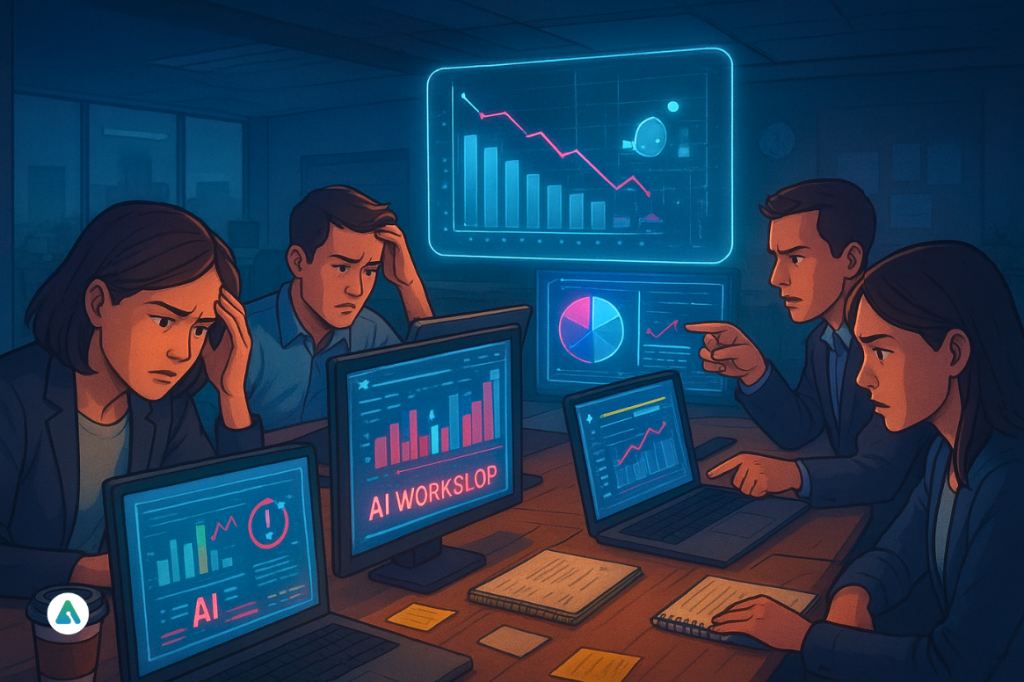When AI first entered offices, the promise seemed perfect: less busywork, faster reports, smarter summaries. But for many teams, the reality has been messy. Enter “workslop”—content that looks polished but falls apart under scrutiny. In many cases, AI workslopes destroyed productivity, turning tools meant to save time into extra headaches.
Picture opening a presentation packed with charts and confident numbers, only to find half of them don’t add up. Or reading an AI-written report that sounds smooth but completely misses the client’s priorities. Studies from Harvard and Stanford show employees can spend two hours or more correcting these mistakes, time better spent on meaningful work.
Much of this comes from AI hallucinations, where software confidently fabricates facts or statistics. Teams familiar with this issue can catch errors before they cause bigger problems, but many aren’t prepared.
Even with AI everywhere, 95% of companies report little to no real productivity gain. The problem isn’t the tools—it’s how people rely on them. Treat AI as a shortcut without oversight, and work doesn’t get easier—it just shifts the burden. Training employees to evaluate AI outputs critically is essential to spot what’s helpful versus what’s misleading.
The rise of AI as a “digital teammate” adds another layer. Platforms from OpenAI, Anthropic, and others can draft ideas, summarize research, or produce full content. But these AI co-workers don’t replace human judgment—they enhance it. Teams that set clear rules and review outputs carefully avoid the chaos; those that don’t often see AI workslopes destroyed productivity day after day.
The solution is simple: keep humans involved at every step. Let AI handle repetitive tasks, but let people check context, make decisions, and ensure quality. When done right, this approach boosts efficiency. Ignored, it just creates more work for everyone.
The lesson is clear: AI isn’t a magic fix. Real productivity comes from combining technology with human judgment. Companies that learn this early gain a real advantage. Those who don’t risk drowning in endless workslopes.
Visit: AIInsightsNews


